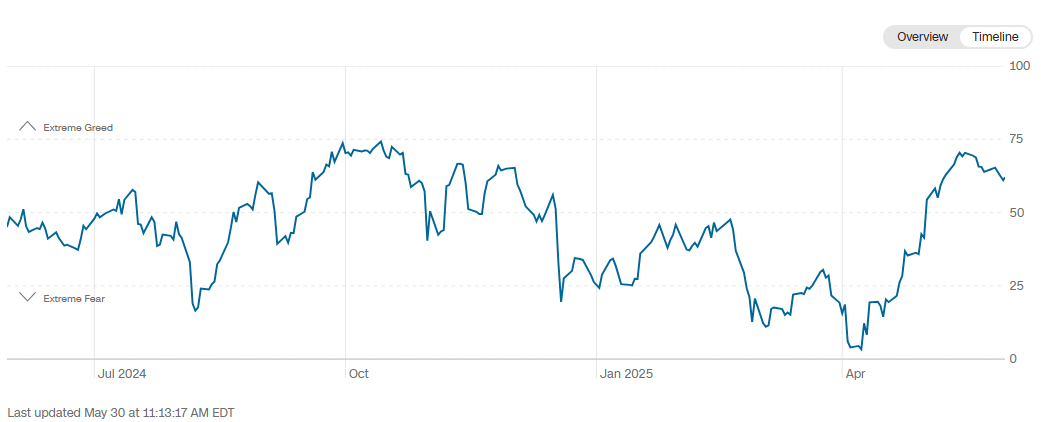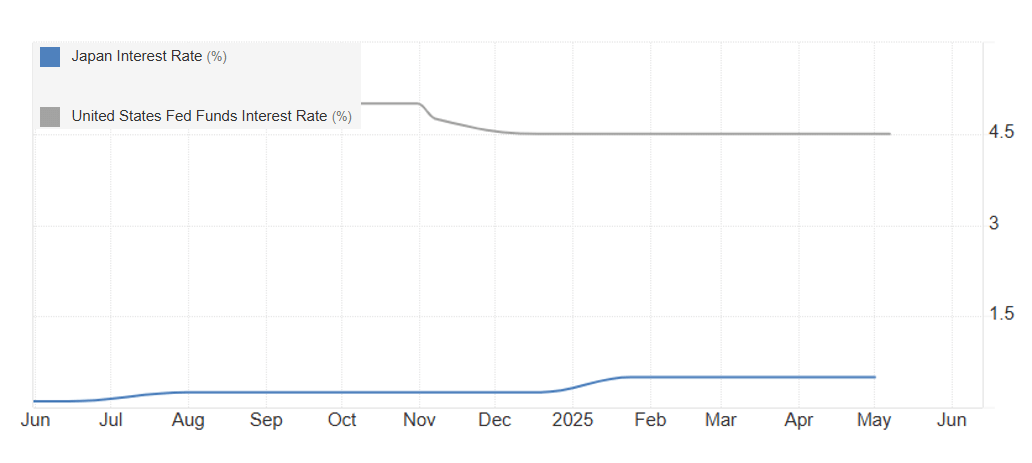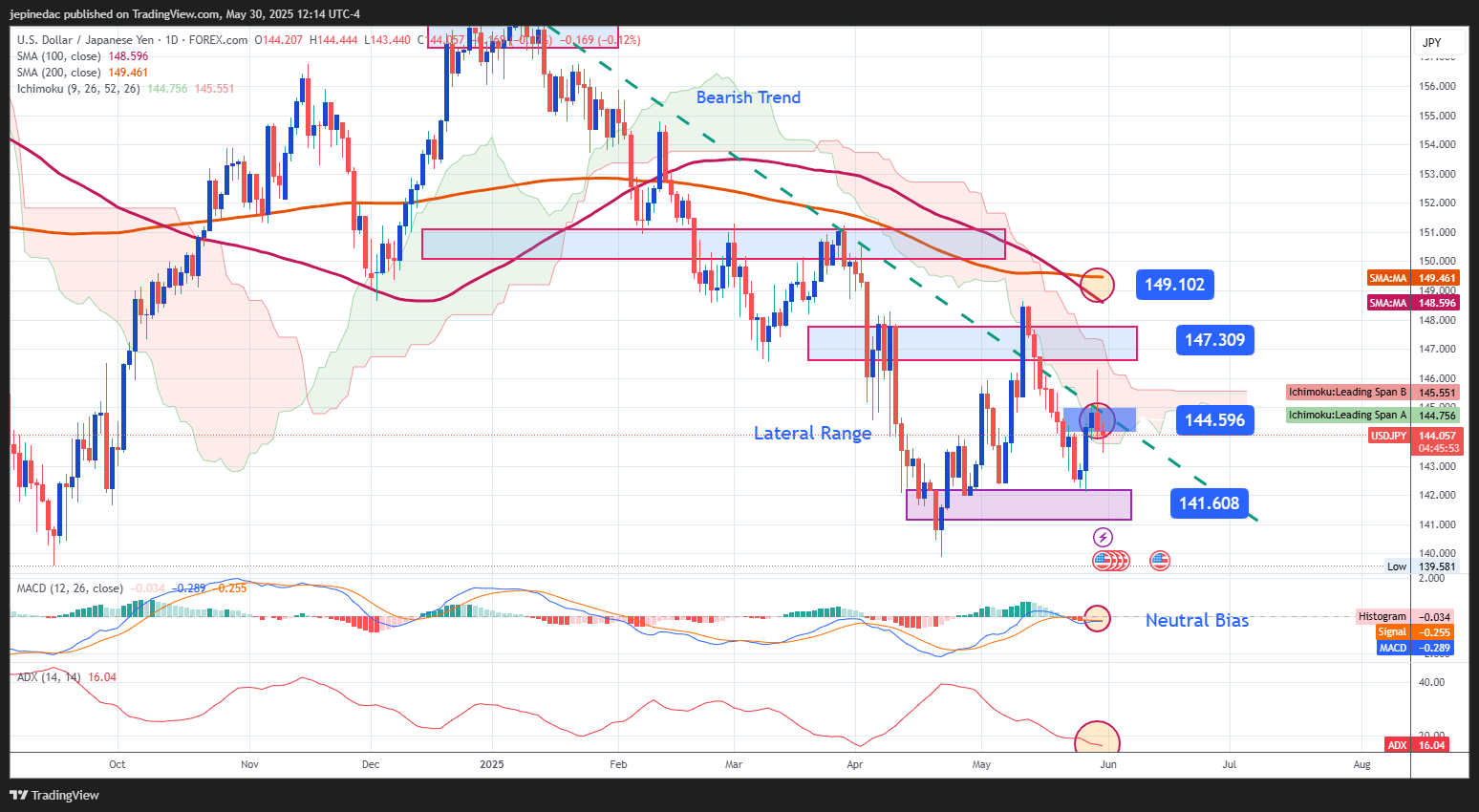
In the last two trading sessions, the Japanese yen has strengthened by more than 1.5% against the U.S. dollar and USD/JPY is falling back below the 145 yen per dollar level. Selling pressure on the dollar has remained active, driven by a recent decline in market confidence, which has temporarily favored the yen due to its role as a short-term safe-haven asset.
Is the Yen Still a Safe Haven?
This week, key events related to the trade war have emerged. Initially, President Trump issued new threats against the European Union, and it was later revealed that the White House is facing legal hurdles in implementing its planned tariff policies. This situation has increased uncertainty about the outcome of the conflict and has already started to affect short-term market sentiment. This is evident in the recent performance of CNN’s Fear & Greed Index, which currently stands at 61 points, gradually moving closer to the “neutral” zone from prior “greed” levels. This decline may be interpreted as a broad decrease in market confidence.

Source: CNN
Given this context, it is important to highlight that the yen tends to appreciate in times of declining market confidence, reinforcing its role as a safe-haven currency. This has been reflected in the recent bearish performance of the USD/JPY pair. If sentiment continues to deteriorate, it could further strengthen buying pressure on the yen in upcoming sessions.
However, it should also be noted that Japan is facing a significant increase in public debt, which has now surpassed 200% of GDP. This extremely high level has raised concerns about the country’s fiscal stability, reducing demand for long-term bonds. While this hasn’t yet had a major impact on the yen, it could pose long-term risks to investor confidence, particularly if the government fails to present a clear solution to the debt issue in the coming weeks.
What’s Going on With Central Banks?
A sharp divergence remains between the interest rates set by the central banks of the United States and Japan. The Federal Reserve maintains a rate of 4.5%, while the Bank of Japan holds steady at 0.5%, marking a significant difference between the two.

Source: Trading Economics
For now, the Fed has indicated in recent statements that it will keep rates at their neutral level in the short term, while the BoJ has also suggested it may maintain a neutral stance to effectively control inflation. However, the higher yield offered by the Fed may continue to attract investment into U.S. dollar-denominated assets. If this rate divergence persists, it could boost demand for U.S. bonds as confidence stabilizes, potentially resulting in bullish pressure on the USD/JPY in the longer term.
USD/JPY Technical Outlook

Source: StoneX, Tradingview
- Ongoing Bearish Trend: Since early January, the USD/JPY has followed a strong bearish trendline, reflecting dominant selling pressure in the long term. So far, bullish correction attempts have not been enough to break key levels, keeping the bearish trend as the most relevant technical structure. In recent sessions, the price has returned to the trendline, but it remains in a neutral zone with no clear breakout signals.
- MACD: The MACD histogram continues to hover around the zero line, indicating a lack of clear direction and reflecting uncertainty in the recent moving average momentum. This could prolong a sideways price action scenario in the short term.
- ADX: The ADX line remains below the 20 level, showing that the average volatility over the last 14 sessions has significantly decreased. This condition suggests that momentum at current resistance levels remains weak, which could continue in the coming sessions.
Key Levels:
- 144.596 – Current Barrier: This level aligns with the bearish trendline. If neutrality persists, further short-term downside corrections could occur.
- 147.309 – Major Resistance: This level marks recent highs. A breakout above it could challenge the prevailing bearish structure.
- 141.608 – Key Support: This level represents the most recent lows, consolidating as the main short-term support. A drop toward this area could reinforce the bearish trend.
Written by Julian Pineda, CFA – Market Analyst
Follow him at: @julianpineda25





